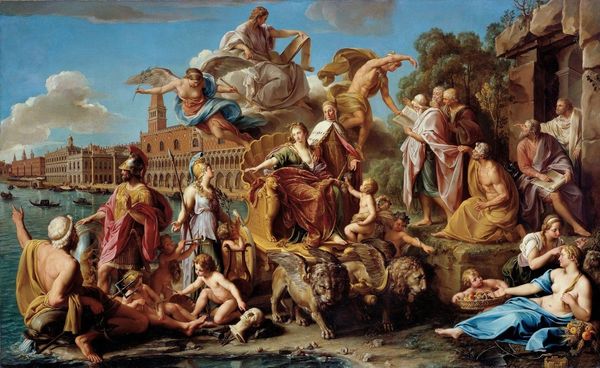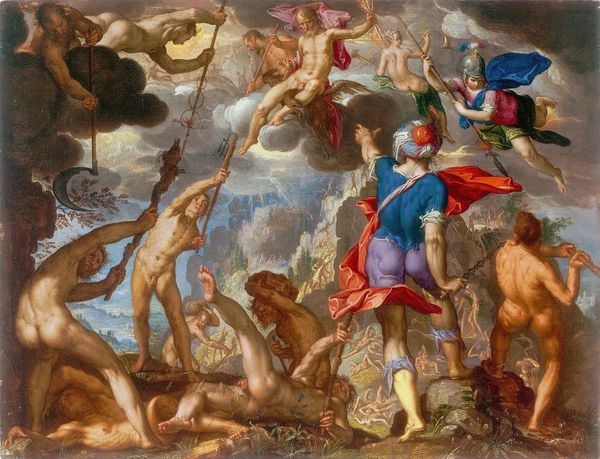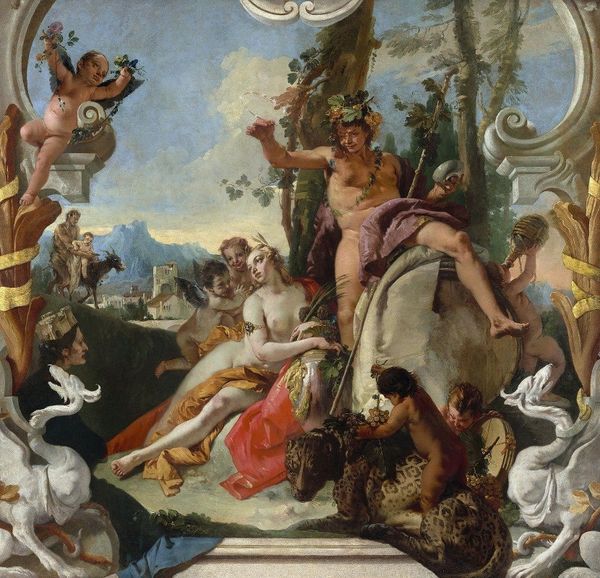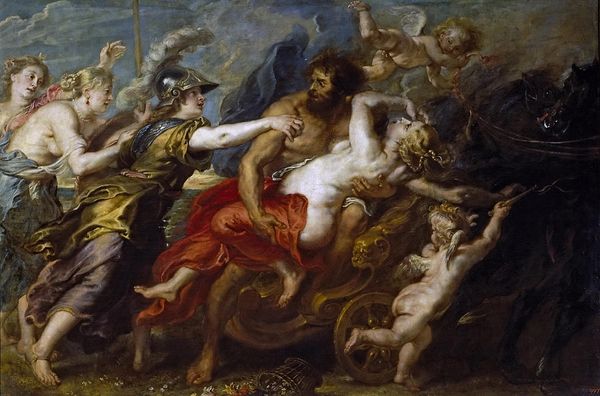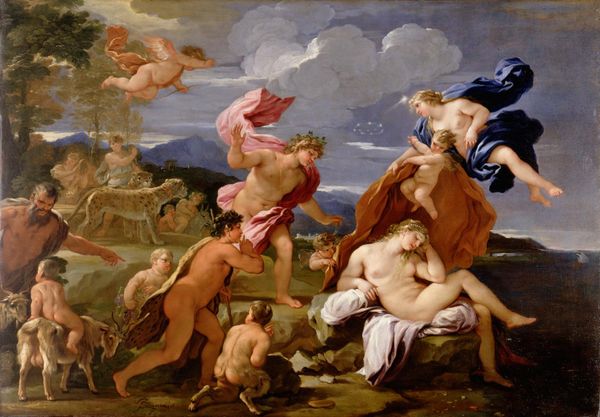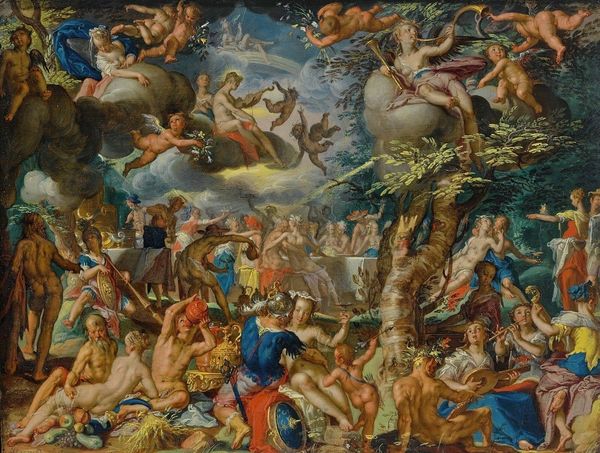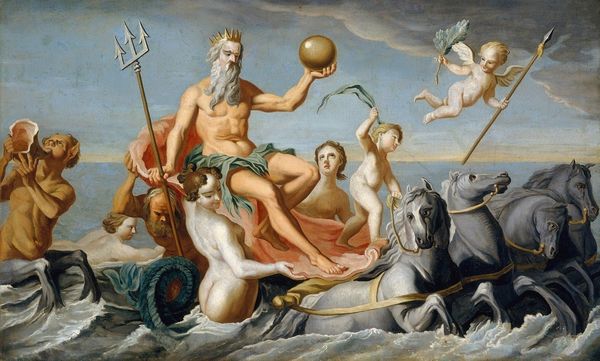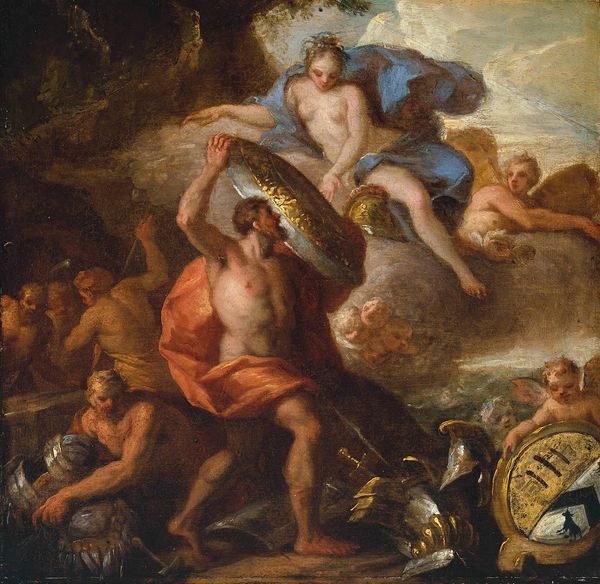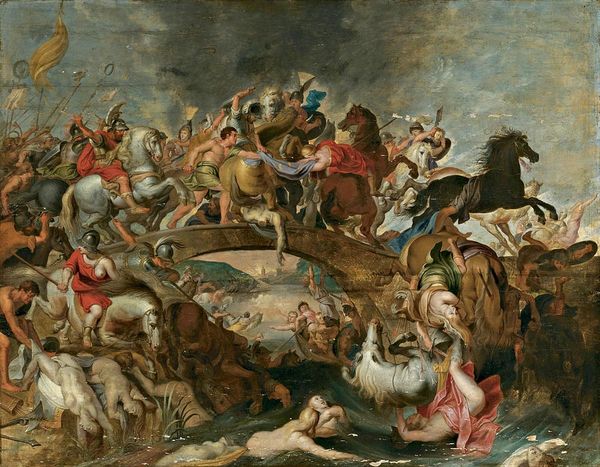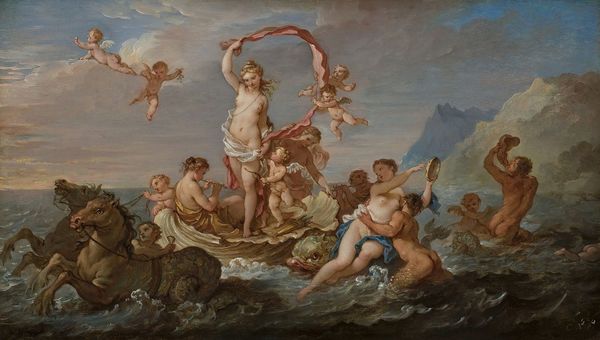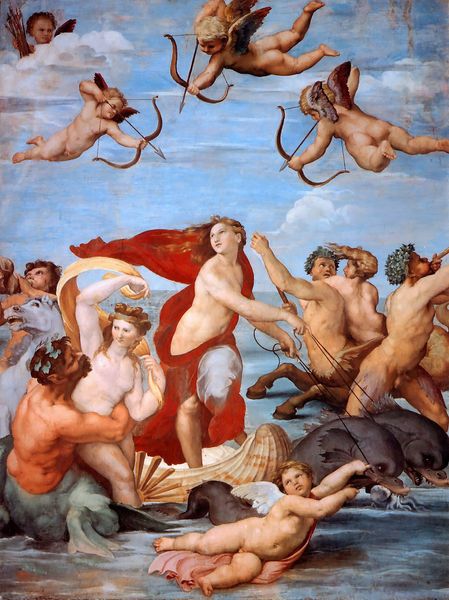
painting, oil-paint
#
allegory
#
baroque
#
painting
#
oil-paint
#
oil painting
#
mythology
#
history-painting
#
nude
Copyright: Public Domain: Artvee
Editor: Here we have Nicolas Poussin's "The Birth of Venus" from around 1635. It's an oil painting absolutely packed with figures emerging from the sea. It feels celebratory, almost theatrical. What are some of the deeper layers you see in this piece? Curator: Poussin's “Birth of Venus,” while seemingly a straightforward mythological scene, speaks volumes about power, representation, and the gaze. Consider Venus's nudity – is it simply aesthetic, or is it a calculated performance of femininity for a predominantly male viewership? What does it mean to depict a goddess in such a vulnerable state, surrounded by male figures? Editor: I guess I hadn’t thought of it in terms of power dynamics. I was mainly focusing on the story being told. Curator: And what narrative are you understanding? Does this depict birth, or a carefully constructed presentation of idealized beauty, reinforcing patriarchal ideals through art? Consider also the context. Poussin painted this during a period of immense social stratification. Who would have been viewing this painting and what messages was it sending them about the world? Editor: That really shifts my perspective. So it’s less about the celebration of beauty and more about understanding how that beauty is being presented and consumed within a specific social structure? Curator: Exactly. Think about how the active male figures contrast with the passive Venus, presented as an object. How do the classical narratives that this work draws on reinforce or subvert such readings? Editor: It’s fascinating to consider the layers of meaning embedded within what appears to be a purely aesthetic piece. It sounds like you are really examining the social dimensions reflected by the scene and questioning its motives. Curator: Indeed! Recognizing art’s capacity to both reflect and shape societal norms is an essential part of art historical understanding. Every element becomes charged with the historical moment.
Comments
No comments
Be the first to comment and join the conversation on the ultimate creative platform.
